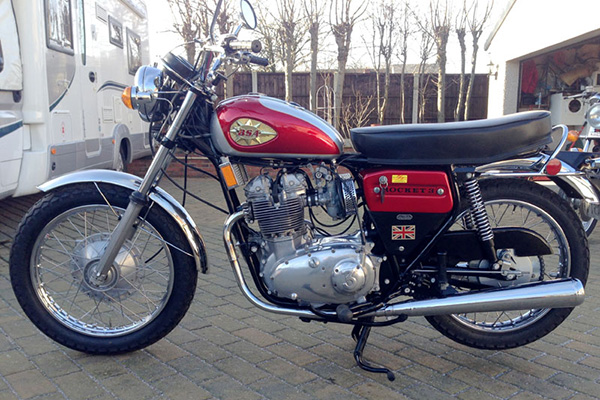4th December 2024
I just had a conversation with, well, I'm not sure who or what, about what would be a great (fantasy...) bike to buy myself for Christmas. It was eerily polite - a bit like the talking computer, "Hal", in the movie 2001 - A Space Odyssey.
AI (Artificial Intelligence) - I'll call him, or her "Arti" - actually I'll stick with they/them to cover all bases - appears to be into classic bikes, although they clearly have a 1970s bent. And when I asked Arti what classic bikes they would like for Christmas they came up with quite a relevant bunch, although they clearly have a bit of a thing for performance, and clearly read the opinions of higher-end collectors.
After giving me an educational on the '70s - "it was when Japanese manufacturers such as Honda, Kawasaki, Yamaha and Suzuki began to overtake British manufacturers such as BSA, Norton and Triumph" (so maybe it read one of my pieces... at least somebody does, then) - the list went something like this - and it maybe also even gives a hint of the most-searched.
Who hasn't perused an early '70s Honda CB750? And which of us of a certain age remember hearing one for the first time - that turbine whine... - and having their eye drawn away from suddenly old-fashioned-looking British bikes. Actually, now may be a good time to buy a classic CB750. Prices seem to have flattened, or "corrected", post-pandemic, and I was offered one at a price I thought was a mistake.

Credit: Bonhams Cars
When Honda beat the other Japanese factories to four-cylinder road bike production, Kawasaki took a breath, thought about it, and came up with an icon to out-icon the icon that was the CB750. The 134mph Kawasaki 900 Z1 set a standard - and ambition - for proper superbikes. And its subtle design features - such as the racer-style "ducktail" behind the seat - also started to appear on everything from mopeds upwards.

Credit: H & H Classics

Credit: H & H Classics
The Laverda Jota. Wow. When it surfaced in the mid-1970s my teenage thought was two-fold: why couldn't a British bike look like that, and just how perfectly-judged the handlebars were. It said Italian style, and those bars said "go on, have a pop, then". Except in Italian. The noise? 85 bhp and 140mph were proper numbers back then, and the sound was pure Italian hairy chest and medallion.

Credit: Bonhams Cars
I was there in Italy, with my motorsport journalist dad, when Ducati's Paul Smart won the Imola 200 race up against the likes of multiple world champion Giacomo Agostini amongst others. The sound of the Ducati was imprinted in my mind, even pre-teen, and I bought a V-twin as soon as my licence permitted. The race-winning bike was a 750SS. Ducati said they'd make a road version, and it morphed into the 900SS. Legend.

Credit: Bonhams Cars
The terrain-flattening Yamaha XT500, a tough and purposeful single-cylinder off-roader that walked the walk - winning numerous brutal cross-continent endurance races, as well as club enduros and beach races. A stand-out noise amongst zinging two strokes, and the first bike I felt was really high to sit on, even at 6ft-plus. Prices are pretty firm amongst a Japanese trail bike value trend which has also "corrected".
Credit: Charterhouse Auctioneers and valuers
Finally, the bike-with-two-names: The BSA Rocket 3 and Triumph Trident were the same bike, with slightly different looks. And on the subject of looks, while the bikes were ready for production in the mid-60s, a delay in sales until 1968 was probably a good move. The prototype looked like something from the '50s, the production bike closer to the then-imminent 1969 Honda CB750.

Credit: H & H Classics
Are you reading this Santa...?

COMMENT